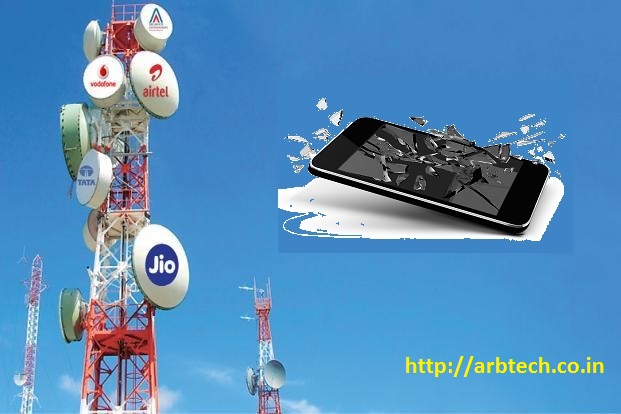new technology in cars fuel economy
1. Variable Valve Timing & Lift improve engine efficiency by optimizing the flow of fuel & air into the engine for various engine speeds. Average Efficiency Increase-5%
2. Cylinder Deactivation saves fuel by deactivating cylinders when they are not needed. Average Efficiency Increase-7.5%
3. Turbochargers & Superchargers increase engine power, allowing manufacturers to downsize engines without sacrificing performance or to increase performance without lowering fuel economy. Average Efficiency Increase-7.5%
4. Integrated Starter/Generator (ISG) Systems automatically turn the engine on/off when the vehicle is stopped to reduce fuel consumed during idling. Average Efficiency Increase-8%
5. Direct Fuel Injection (w/ turbocharging or supercharging) delivers higher performance with lower fuel consumption. Average Efficiency Increase-11-13%
1. 5G Networks
Spain’s National 5G Plan for 2018-2020 stipulates that throughout 2019, pilot projects based on 5G will be developed resulting in the release of the second digital dividend. Hence, the groundwork is being laid so that in 2020 we will be able to browse the Internet on a smartphone at a speed that will reach 10 gigabytes per second. Data from Statista, a provider of market and consumer data, indicates that by 2024, 5G mobile network technology will have reached more than 40 percent of the global population, with close to 1.5 billion users.
2. Artificial Intelligence (AI)
This trend has appeared in all the lineups for a few years now, but everything indicates that this year will be the year it takes off definitively. This is the year we’ll see its democratization, while it is even included in the political agenda. At the beginning of December, the European Commission released a communication on AI directing the member states to define a national strategy addressing this topic by mid-2019.
3. Autonomous Devices
In respect to the previous point robots, drones, and autonomous vehicles are some of the innovations in the category the consulting firm Gartner labels “Autonomous Things” defined as the use of artificial intelligence to automate functions that were previously performed by people. This trend goes further than mere automation using rigid programming models, because AI is now being implemented to develop advanced behavior, interacting in a more natural way with the environment and its users.
4. Blockchain
Blockchain technology is another topic that frequently appears on these end of year lists. It has now broken free from an exclusive association with the world of cryptocurrencies; its usefulness has been proven in other areas. In 2019 we will witness many blockchain projects get off the ground as they try to address challenges that still face the technology in different fields like banking and insurance. It will also be a decisive year for the roll-out of decentralized organizations that work with intelligent contracts.
5. Augmented Analytics
This trend represents another stride for big data, by combining it with artificial intelligence. Using machine learning (automated learning), it will transform the development, sharing, and consumption of data analysis. It is anticipated that the capabilities of augmented analytics will soon be commonly adopted not only to work with data, but also to implement in-house business applications related to human resources, finance, sales, marketing and customer support – all with the aim to optimize decisions by using deep data analysis.
6. Digital Twins
A digital twin is a virtual replica of a real-world system or entity. Gartner predicts that there will be more than 20 billion sensors connected to end points by 2020, but the consulting firm goes on to point out that there will also be digital twins for thousands upon thousands of these solutions, with the express purpose of monitoring their behavior. Initially, organizations will implement these replicas, which will continue to be developed over time, improving their ability to compile and visualize the right data, make improvements, and respond effectively to business objectives.
7. Enhanced Edge Computing
Edge computing is a trend that relates most specifically to the Internet of Things. It consists in placing intermediate points between connected objects. Data can be processed at these intermediate points, thus facilitating tasks that can be performed closer to where the data has been received, thus reducing traffic and latency when responses are sent. With this approach, processing is kept closer to the end point rather than having the data sent to a centralized server in the cloud. Still, instead of creating a totally new architecture, cloud computing and edge computing will be developed as complementary models with solutions in the cloud, administered as a centralized service that runs not only on centralized servers but also on distributed servers and in the edge devices themselves.
8. Immersive Experiences in Smart Spaces
Chatbots integrated into different chat and voice assistance platforms are changing the way people interact with the digital world, just like virtual reality (VR), augmented reality (AR), and mixed reality (MR). The combination of these technologies will dramatically change our perception of the world that surrounds us by creating smart spaces where more immersive, interactive, and automated experiences can occur for a specific group of people or for defined industry cases.
9. Digital Ethics and Privacy
Digital ethics and privacy are topics that are receiving more and more attention from both private individuals as well as associations and government organizations. For good reason, people are increasingly concerned about how their personal data is being used by public and private sector organizations. Therefore, we conclude that the winning organizations will be those that proactively address these concerns and are able to earn their customers’ trust.
You may also like :




















